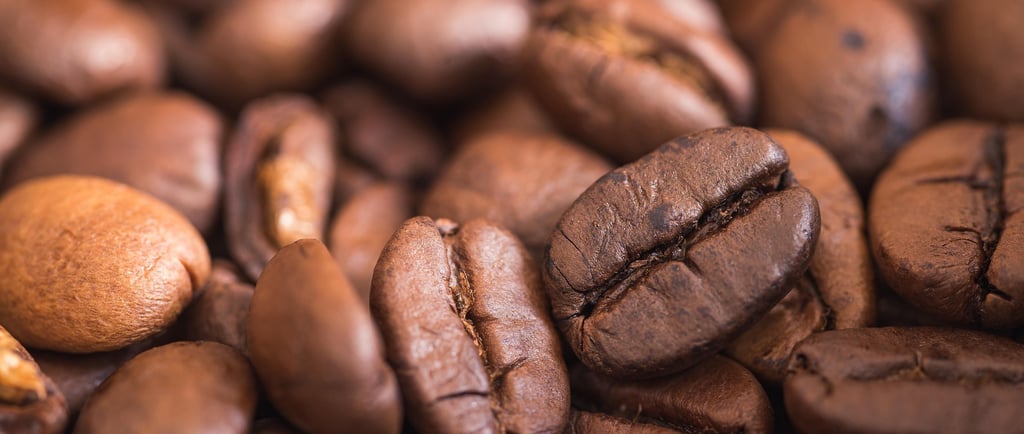The Cherry With The Bitter Secret 🍒☕
☕ A follow-up story uniting three Chapters the Biology Album : The Seed and The Fruit and Ecology. 🌱✨ It invites children to explore one tropical shrub with a remarkable strategy for survival—producing sweet cherries whose seeds are so bitter they are ignored by almost every creature, ensuring they can germinate into the next generation. 🛡️🍒 Yet one mammal, the human, discovered something hidden in that bitterness: energy, warmth, and a rich flavor revealed only through roasting. 🔥 From its beginnings in Ethiopia’s forests to bustling Arabian marketplaces, to Europe’s “penny universities,” and finally across the oceans to vast plantations in the Americas, coffee’s journey is a living map of human curiosity and adaptation. 🌍📜 This story connects to seed dispersal, pollinator relationships, habitat ecology, and the cultural exchange of plants, sparking wonder: “Where are the biggest coffee plantations today, and could there be another plant with a bitter secret humans have turned into a beloved drink?” 💭
BIOLOGY STORIES
8/10/20253 min read


Do you remember when we explored how plants protect their seeds—sometimes with hard shells, sharp spines, or even by tasting unpleasant to keep animals away? 🌿🛡️
Today, we will meet a plant whose seeds hold a taste so bitter almost every animal avoids it… except one that found something extraordinary in that bitterness. This bitterness is the plant’s defense, a chemical signal to most animals: “Don’t eat me! Let me grow into the next generation.” 🛡️ The fruit’s sweet skin tempts some birds and mammals to eat it and scatter the seeds, but the bitter seeds themselves pass through untouched.
For thousands of years, this bitterness worked… until humans came along. Over time, humans—driven by their curiosity—learned to roast the seeds, transforming their flavor from sharp and bitter to rich and complex ☕🔥.
This bitter seeds come a small evergreen shrub that grows in warm tropical regions 🌞🌍. It produces clusters of sweetly scented white flowers 🌸 that last just few days before they turn into bright red fruits called coffee cherries 🍒. Inside each cherry are usually two seeds—known as coffee beans.
Just like peaches, olives, and even peppercorns, coffee cherries are drupes—fruits with a thin red skin (exocarp), a sweet fleshy mesocarp , and a hard shell (endocarp) protecting the seed inside. Most of the time, each cherry holds two seeds pressed together like twins. But sometimes, a cherry develops just one seed—this is called a peaberry. Peaberries are rounder, rarer, and are carefully selected and sold separately for a higher price.
The coffee cherry is a master of plant strategy. Its fleshy pulp is sweet, tempting birds and monkeys to eat it and carry the seed far away. But inside, the seed is full of bitter chemicals—especially caffeine—that most animals avoid. This way, the seed is left unharmed and ready to grow in a new place. Even the leaves hold caffeine, discouraging insects and animals from nibbling them and helping the coffee plant keep its space in the forest. 🌿🛡️
After humans harvest the cherries, they spread them under the sun ☀️ to dry, their bright skins turning wrinkly and brown. Once the outer shell is removed—a step called hulling— pale green coffee beans are revealed, waiting for the magic of roasting to unlock their aroma.
In some tropical countries, a cat-like nocturnal mammal called the civet 🐾 enjoys the sweet fruit but can’t digest the seeds. The beans pass through its digestive system, are collected, cleaned, and roasted to make kopi luwak which means "civet coffee"—and is one of the most expensive coffees in the world!
But the name coffee originates from the Arabic word qahwa, meaning “a drink made from plants,” which traveled through Turkish (kahve) and Italian (caffè) before becoming “coffee” in English.
Coffee’s story began in the ancient forests of Ethiopia, where legend tells of a goatherd who noticed his goats dancing with energy after eating the cherries 🐐💃. From there, coffee traveled to Yemen, where monks used it to stay awake during long nights of prayer. The port city of Mocha became the heart of the coffee trade. Ships carried beans grown in Yemen’s highlands to faraway lands, and soon the word “Mocha” became known everywhere as a name for this rich coffee.
About 500 years ago, coffee houses were bustling in the Middle East, filled with music, chess, poetry, and merchant conversations. When coffee reached Europe in the 1600s, “penny universities” sprang up—so named because, for the price of a cup of coffee, you could join lively debates and exchange ideas 🗣️📚.
Traders then carried coffee plants and seeds to new lands. In the 1700s, around 300 years ago coffee took root in the Caribbean, Central America, and South America, where climates and soils were perfect for cultivation.By the 1800s, Brazil had become one of the world’s largest producers—a title it still holds today.
From a small red drupe hanging on a tropical branch to the steaming cup on a café table, this cherry with a bitter secret inside is deeply connected to the living world around it. It depends on bees 🐝 to carry pollen from flower to flower, ensuring cherries will form. Birds, monkeys, and even the curious civet 🐾 help disperse seeds, while people cultivate and carry it across continents. Each stage—from blossom to ripe cherry—relies on a web of relationships between plant, animal, and human. 🌿🌍
💭 I wonder now… Which are the top 5 coffee-producing countries in the world? 🌍❓And what other drupes do we drink or eat each day—perhaps without even realizing it? 🍒🥭🌰
Or maybe you could explore what other plants contain this bitter chemical called caffeine.🌿🛡️
With Montessori joy,
Vanina 😊

